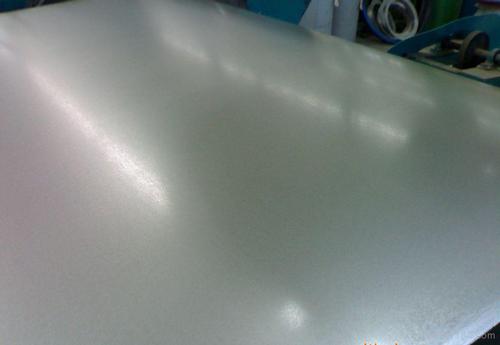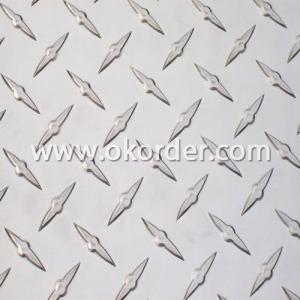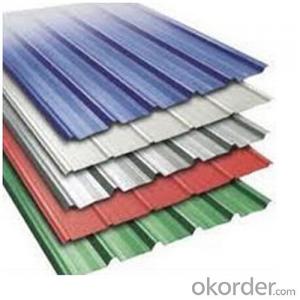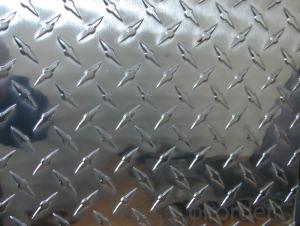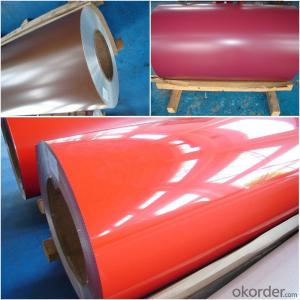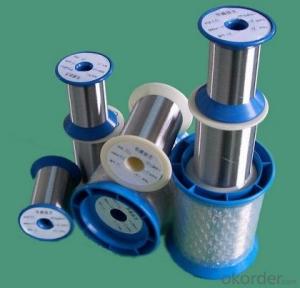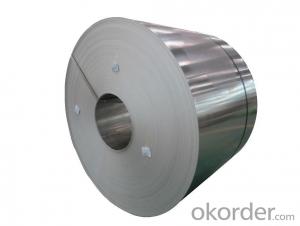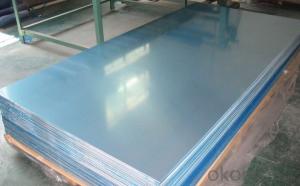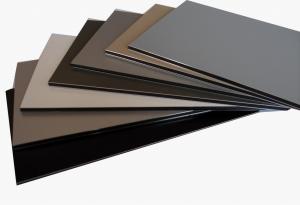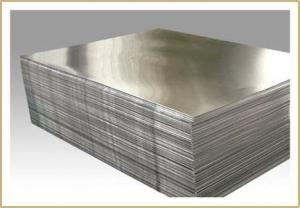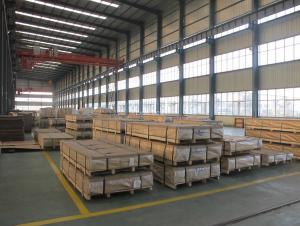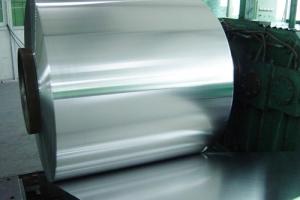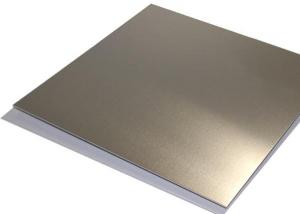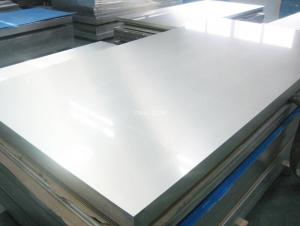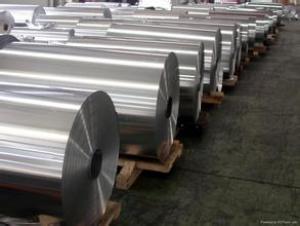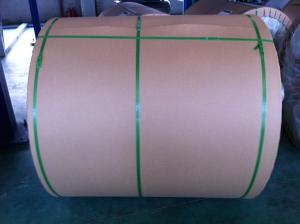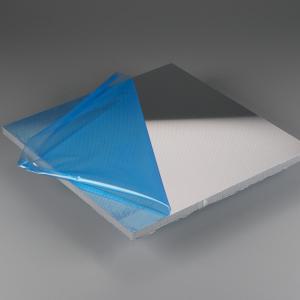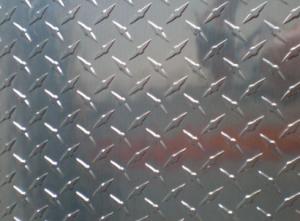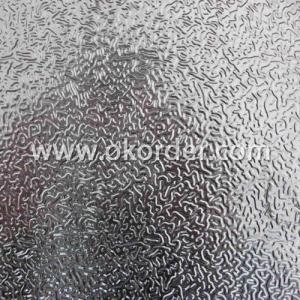Aluminum Stamping Sheets - Aluminium Sheet and Plate Stocks
- Loading Port:
- Shanghai
- Payment Terms:
- TT or LC
- Min Order Qty:
- 7 m.t.
- Supply Capability:
- 4000 m.t./month
OKorder Service Pledge
OKorder Financial Service
You Might Also Like
1.Structure of Product Description
Cold rolled aluminum sheet is widely used in the field of construction field and decoration field, etc.
There are many different grades, such as: 1000 series, 2000 series, 3000 series, 5000 series, 6000series, etc. The detailed grade are as follows: 1010, 1050,1060,1100, 2024, 3003, 3005, 3105, 5052,5754,5083,6061,6063,8011, etc.
The temper is include H14, H22, H24, H44,H112,H114,etc.
2. Main features of the product
a.Competitive price
b.Frist-Class Service.
c. Shortest service.
3. Image.
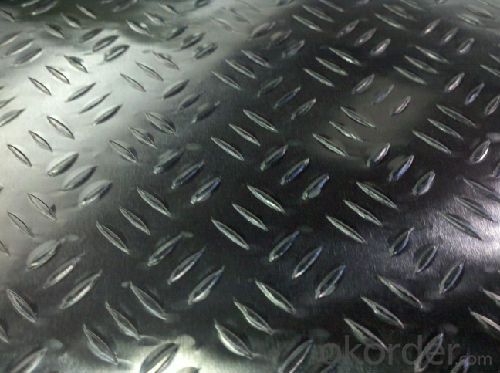
4. Product detailed sizes:
1000mm*2000mm, 1219mm*2438mm,1220mm*2440mm, 1250mm*2500mm,1500mm*3000mm, etc.
5. FAQ:
What is the quality standard?
---Usually our standard is GB3880-2006 or others.
What is the width range?
---It is from 1000mm to 2500mm, etc.
What is the length range:
---It is from 2000mm to 6000mm, etc.
What is the MOQ for your products yet?
---Normally it is around 5 tons/each size.
How many tons did you export in one year?
---Normally it is around 9000 tons totally.
- Q:Are aluminum sheets suitable for use in cryogenic environments?
- Yes, aluminum sheets are suitable for use in cryogenic environments. Aluminum has excellent thermal conductivity and low density, making it an ideal material for cryogenic applications. It can withstand extremely low temperatures without losing its structural integrity or experiencing significant thermal expansion. Additionally, aluminum has good corrosion resistance and can be easily fabricated into various shapes and sizes. These properties make aluminum sheets commonly used in cryogenic systems, such as cryostats, superconducting magnets, and liquid nitrogen storage tanks.
- Q:How do aluminum sheets perform in terms of creep resistance?
- The excellent creep resistance of aluminum sheets is well-known. Creep refers to the gradual deformation of a material under a constant load over time. In comparison to steel and other metals, aluminum exhibits a relatively low creep rate. This means that it deforms at a slower pace when subjected to the same load and temperature conditions. As a result, aluminum sheets are ideal for applications that require dimensional stability and resistance to long-term deformation. Furthermore, aluminum's low susceptibility to creep enables it to endure high temperatures without undergoing significant deformation. Consequently, it finds suitability in a wide range of industries, including aerospace, automotive, and construction. Nevertheless, it is crucial to consider that the creep resistance of aluminum sheets can vary depending on factors such as the alloy employed, heat treatment, and other variables. Hence, it is vital to select the appropriate aluminum alloy and design that can optimize creep resistance for specific applications.
- Q:Can aluminum sheets be used for architectural facades?
- Yes, aluminum sheets can be used for architectural facades. Aluminum is a versatile material that offers several advantages for facade applications. It is lightweight, durable, and corrosion-resistant, making it suitable for various weather conditions. Aluminum sheets can be easily fabricated and installed, offering flexibility in design and allowing for intricate and complex facades. Additionally, aluminum can be finished in a variety of ways, including powder coating, anodizing, or painting, to enhance its appearance and provide the desired aesthetic appeal. Overall, the use of aluminum sheets for architectural facades provides architects and designers with a wide range of options to create visually appealing and long-lasting building exteriors.
- Q:Wonderland is the hard aluminum with what tools do? Thank you
- Wrought iron platform made 3 aluminum alloy with a hard aluminumAluminum + granite can also be synthesized
- Q:What is the cost of an aluminum sheet?
- The cost of an aluminum sheet can vary depending on several factors such as the thickness, size, grade, and market conditions. Generally, aluminum sheets are priced per square foot or per pound. On average, the cost can range from $0.50 to $5 per square foot or $1 to $10 per pound. It is important to note that these prices are just estimates and can fluctuate based on supply and demand, location, and other factors. To get an accurate cost, it is recommended to contact local suppliers or check online marketplaces for the most up-to-date pricing information.
- Q:What does everyone think about replacing aluminum bats with wooded ones in high school. More and more cities are going back to wood.........why
- Simply put, the risk of somebody incurring a serious injury or even death is starting to outweigh the financial benefits of using aluminum over wood. The increase of velocity of a pitched ball coming off a wooden bat compared to one coming off aluminum is tremendous. Specifically pitchers and corner infielders are put at major risk each and every time they play games against hitters using aluminum bats. Places that once thought of saving money by not having to replace broken bats are wisely chosing to put a higher price tag on a players health. It should be a universal thought, but sadly there are some who still endanger players everyday by allowing aluminum bats...they are the ones who should consider the cost of a wooden bat vs. the cost of an athletes health.
- Q:1) Aluminum ore is not formed in Quebec (why not?) 2)but aluminum ore is smelted into aluminum in Quebec. Why?
- Bauxite is the most common aluminum ore. Bauxite forms in tropical regions because its formation requires intense weathering conditions (lots of frequent rainfall) with a very good drainage. Even if, due to continental drift, Quebec was once in a tropical region, it is highly unlikely that bauxite would have formed there because almost all of Quebec sits on the Canadian Shield. The Canadian Shield is a large region of very, very old rock that can be thought of as mostly monolithic and quite flat. Its monolithic nature makes it difficult to weather, and its flatness means that it doesn't drain as well as is needed to form bauxite. Smelting bauxite requires enormous amounts of electricity - not just any energy, but electricity. Quebec has enough hydroelectric resources to make this practical.
- Q:What is the typical cost-effectiveness of aluminum sheets compared to other materials?
- The cost-effectiveness of aluminum sheets can vary based on several factors, such as the specific application, size, thickness, and market conditions. However, aluminum sheets are generally deemed cost-effective due to their unique properties and versatility. Aluminum, being a lightweight material, requires less material to achieve the same strength as heavier alternatives. This can lead to cost savings in terms of transportation, installation, and overall project expenses. Moreover, aluminum sheets possess excellent corrosion resistance, durability, and a long lifespan, which further contribute to their cost-effectiveness over time. In addition, aluminum is highly recyclable, resulting in significant savings in terms of energy and resources during the recycling process. This recyclability enhances the overall cost-effectiveness of aluminum sheets, as they can be reused or repurposed rather than being discarded as waste. Although the initial cost of aluminum sheets may be higher compared to some other materials, the long-term benefits and savings they offer often outweigh the initial investment. When assessing the cost-effectiveness of aluminum sheets compared to other materials, it is crucial to consider factors such as durability, maintenance costs, energy efficiency, and environmental impact. Ultimately, the cost-effectiveness of aluminum sheets compared to other materials will depend on the specific requirements and circumstances of each project. It is recommended to consult industry experts or suppliers to evaluate the cost-effectiveness of aluminum sheets for a particular application in relation to other materials.
- Q:How are aluminum sheets different from aluminum plate?
- There are two forms of aluminum metal, namely aluminum sheets and aluminum plates, which primarily differ in terms of thickness. Aluminum sheets are usually thin and flat, with a thickness of less than 6mm. They are commonly utilized in situations where lightweight and flexibility are crucial, such as in the fabrication of aircraft, automobiles, and electronic devices. Conversely, aluminum plates are thicker and heavier than sheets, typically measuring 6mm or more in thickness. Plates are frequently employed in applications that necessitate strength and durability, such as in the assembly of heavy machinery, structural supports, and marine equipment. Despite both sheets and plates being composed of aluminum, their distinctive thicknesses render them suitable for distinct purposes.
- Q:Are aluminum sheets resistant to saltwater corrosion?
- Generally, aluminum sheets exhibit resistance to corrosion from saltwater. When exposed to air or water, including saltwater, aluminum naturally develops a protective oxide layer. This layer serves as a barrier, preventing additional corrosion and safeguarding the underlying metal. Furthermore, aluminum is both lightweight and durable, making it a favored choice for numerous marine applications such as boats, shipbuilding, and offshore structures. Nevertheless, it is important to acknowledge that the level of resistance to saltwater corrosion may differ based on the specific alloy and surface treatment of the aluminum sheets. Consequently, selecting the appropriate alloy and applying protective coatings can further enhance the corrosion resistance of aluminum sheets in saltwater environments.
1. Manufacturer Overview |
|
|---|---|
| Location | |
| Year Established | |
| Annual Output Value | |
| Main Markets | |
| Company Certifications | |
2. Manufacturer Certificates |
|
|---|---|
| a) Certification Name | |
| Range | |
| Reference | |
| Validity Period | |
3. Manufacturer Capability |
|
|---|---|
| a)Trade Capacity | |
| Nearest Port | |
| Export Percentage | |
| No.of Employees in Trade Department | |
| Language Spoken: | |
| b)Factory Information | |
| Factory Size: | |
| No. of Production Lines | |
| Contract Manufacturing | |
| Product Price Range | |
Send your message to us
Aluminum Stamping Sheets - Aluminium Sheet and Plate Stocks
- Loading Port:
- Shanghai
- Payment Terms:
- TT or LC
- Min Order Qty:
- 7 m.t.
- Supply Capability:
- 4000 m.t./month
OKorder Service Pledge
OKorder Financial Service
Similar products
Hot products
Hot Searches
Related keywords



